How To Change Backup Location Itunes Mac
Moving your iPhone or iPad backup to an external hard drive is a bully fashion to free up infinite on your Mac, especially if you've backed up more than 1 device on the same calculator. However, managing storage on your Mac tin exist tricky, fifty-fifty more and then if you take limited space.
That's why you demand to get artistic, and moving your fill-in files to an external hard bulldoze is a convenient way to accept some extra space on any of the best Macs — that is, as well using iCloud. Here's how you can move your iPhone or iPad backup to an external hard bulldoze.
Note: This guide is for people who back upward their iPhone or iPad using a calculator, not through iCloud. It works with macOS Big Sur and subsequently.
What are these backup files, and why are they taking upwardly so much space?
When you back up your mobile device using your computer, the backup is stored on your Mac. The location of the backups is in a folder called MobileSync, and sometimes it gets pretty big, particularly if you lot are syncing multiple devices. Onetime backups are replaced with new ones, simply families that have multiple devices backed upwards to one computer volition take up a lot of storage space.
Nosotros highly recommend syncing on iCloud and then deleting the backups on your Mac, rather than relocating them. Information technology's a amend, more straightforward choice, simply you might need to buy some extra iCloud storage.
If yous're thinking about using iCloud, here'south how y'all tin choose which iCloud storage plan you should get. That beingness said, if you're still aptitude on moving them to an external difficult drive, we're hither to help.
Step 1: Locate your backups
This part is easy. Your backups are stored in a MobileSync folder. You can find them by typing ~/Library/Awarding Support/MobileSync/Backup into Spotlight. You tin can besides find the backups for specific devices from Finder.
- Click Finder on your Mac'southward Dock.
- Click on your device on the left side of the Finder window.
-
Click on Manage Backups on the General tab.
 Source: iMore
Source: iMore - Select a specific device.
- Hold down the Control key and click on the device.
-
Select Show in Finder from the list of available options.
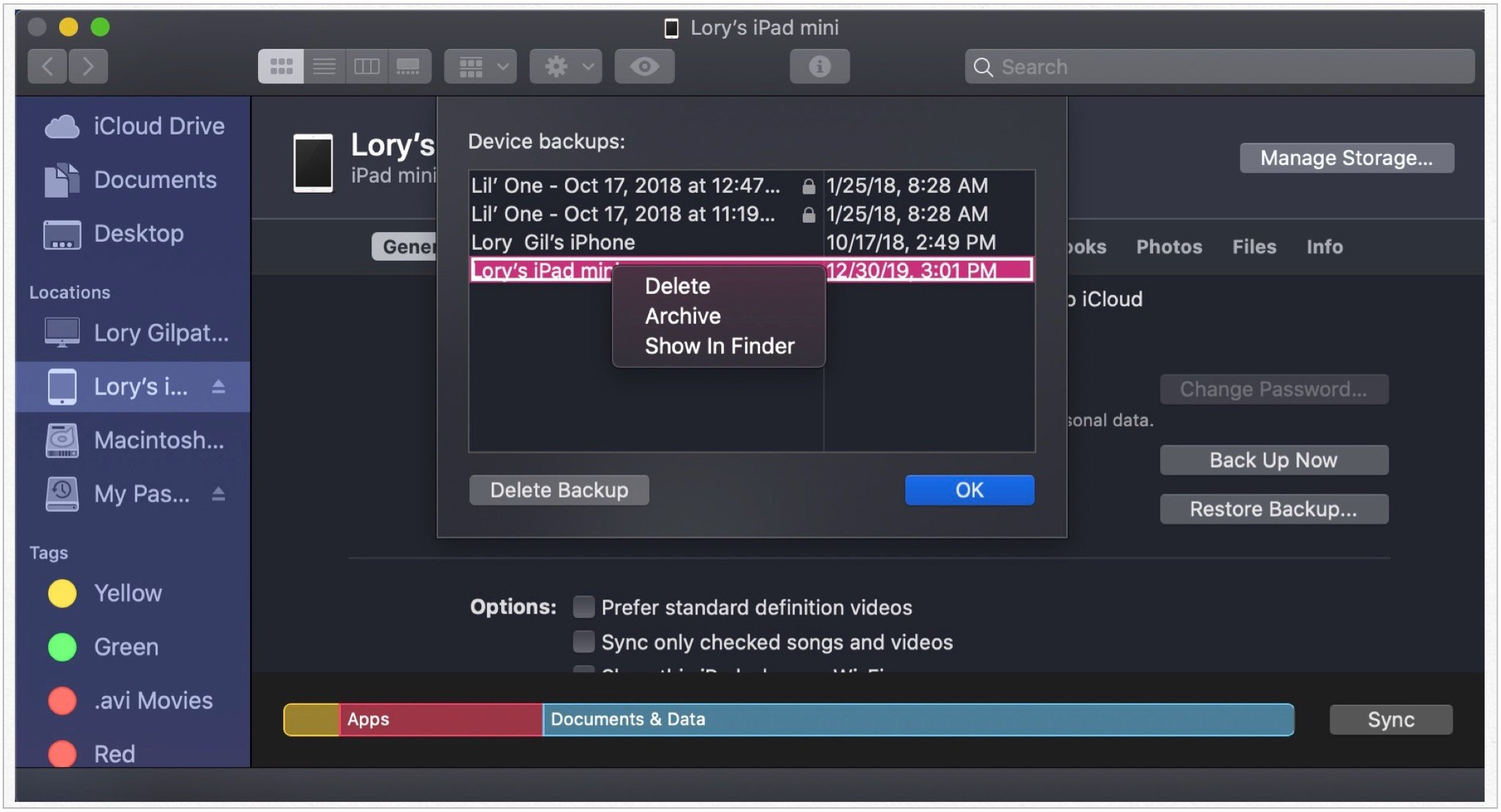 Source: iMore
Source: iMore
Pace 2: Motility your backups to an external hard drive
This part is easy, too. But, y'all actually have to pay close attending to the proper noun of your hard drive and the new folder names you create, including punctuation and spacing. This information will be used when creating a Terminal pathway. If you use different names than the ones suggested, exist certain to supplant them with the exact name y'all accept in the Terminal command in Step 3.
- Connect your external hard drive to your Mac if it isn't already connected.
- Open the external difficult drive.
- Become back to the Finder window with your iOS backups in information technology and select the device backup folder (It will either exist called "Backup" or accept a bunch of numbers and messages).
-
Drag information technology to your external hard drive.
 Source: iMore
Source: iMore - Enter your ambassador countersign to cosign your action.
- Rename the iOS backup binder on your external difficult drive to ios_backup. Y'all may have to enter your administrator password once again to brand this modify.
-
Rename the sometime backup folder in Finder to old_backup.
 Source: iMore
Source: iMore
Do non delete the old_backup folder notwithstanding.
Step 3: Create a symlink to tell your computer the new location of your backups
This is the more difficult and nearly important pace to moving your iOS backups to an external hard bulldoze. If y'all don't perform this step, your computer won't support your iPhone or iPad anymore. You lot'll take to manually move the folders dorsum to your Mac instead.
In this footstep, you'll create a symlink — or symbolic link. When you lot create a symlink, you create a new path for Finder to take to become to the backups binder.
Former iMore writer and Mac genius Peter Cohen explains symlinks perfectly.
Some applications don't follow aliases properly. An older way of creating those connections is more reliable for actions like what nosotros want iTunes to do: Symbolic links, aka symlinks. They work at a depression enough level that applications and operating system functions don't have equally difficult a time with them as they practise aliases.
We're going to use Mac's Last app to create a symbolic link to play a trick on iTunes into backing up onto your external drive rather than the kick drive.
If you're using macOS Mojave or later, y'all will starting time need to alter the permissions for Concluding on your Mac. Otherwise, you won't have permission to follow the remaining steps of this procedure. To practice so:
- Open System Preference.
- Select Security & Privacy.
- Cull the Privacy tab.
- Select Click the lock to make changes at the lesser left of the screen if this screen is locked. Otherwise, skip to Step 6.
-
Enter your system password and click Unlock on the popup screen.
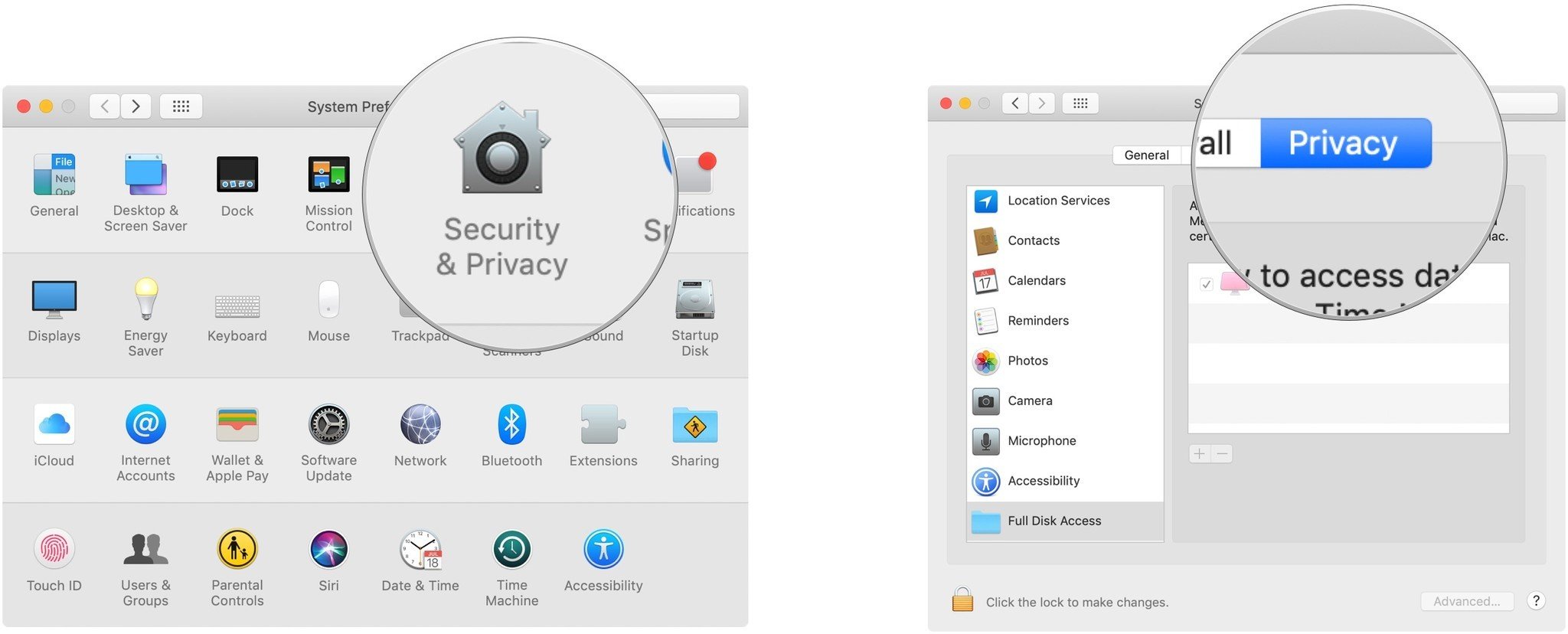 Source: iMore
Source: iMore - Click Full Disk Access on the left-hand side of the screen.
- Cull + to add Terminal to the list of apps with full control on your computer.
- In the Finder screen that'south displayed, blazon Terminal in the search box.
- In the search results, highlight Terminal.
-
Tap Open.
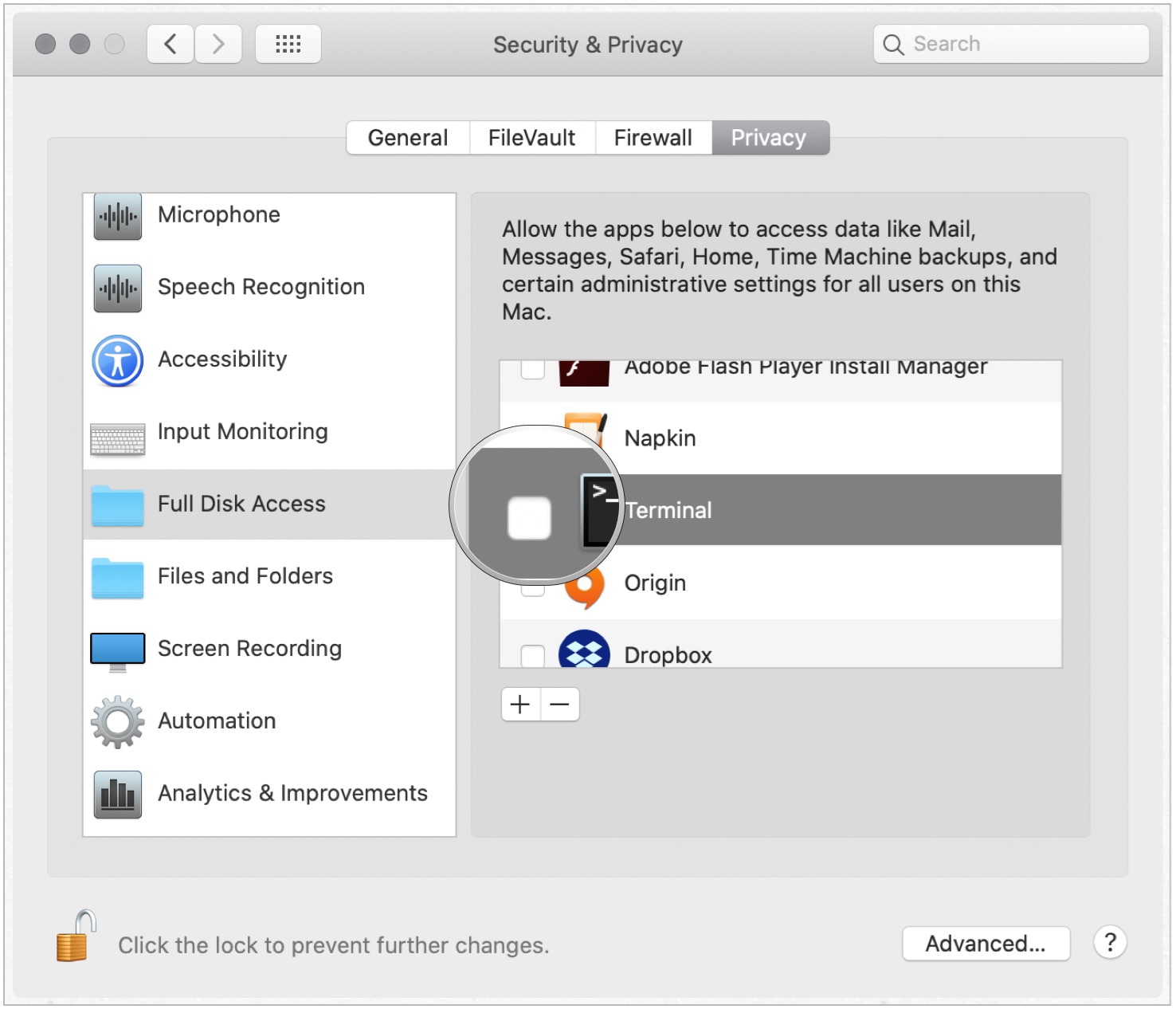 Source: iMore
Source: iMore
Next, a lesson in using Final. The proper pathway is very important for this to work. Every person's hard bulldoze proper noun and every backup folder name volition be different. The following is the anatomy of the Terminal code we are using:
ln -s /Volumes/External/ios_backup ~/Library/Application\ Support/MobileSync/Backup/4f1234a05e6e7ccbaddfd12345678f1234b123f
- ln -due south: This command tells the operating system to go to the new location. (This starts with a lowercase L, not a capital I.)
- Volumes: A hard drive.
- External: The proper noun of a difficult bulldoze. Yours volition probable be named something else. In the Terminal command, you must change "External" to whatsoever your external hard drive is named.
- ios_backup: The renamed backup binder you dragged into your external hard bulldoze. This is the new place that your iOS backups volition exist stored.
- ~/Library/Application\ Support/MobileSync/Backup: This control tells the operating system where the backup is.
- 4f1234a05e6e7ccbaddfd12345678f1234b123f: The name of the device backup binder. If you are transferring all of your backups, this volition but be named "Backup." If you are transferring one device, utilise the proper name of the backup folder for your device. The one above isn't fifty-fifty a real file proper name. You must change the to a higher place backup folder name to whatsoever is the proper name of the binder you are transferring.
If your external difficult drive's name has infinite, exist sure to use the proper coding. For case, if your difficult drive is named "My Passport," be sure to use a backslash after My, then Space, and then Passport. Like this: My\ Passport. Don't forget to capitalize when necessary.
- Find Concluding using Spotlight.
-
Type the code below.
Don't forget to change the hard drive proper noun and the fill-in folder name to reflect the name of your difficult drive and backup folder.
ln -south /Volumes/**External**/ios_backup ~/Library/Application\ Support/MobileSync/Backup/**4f1234a05e6e7ccbaddfd12345678f1234b123f** Source: iMore
Source: iMore - Hitting Return.
- Quit Last.
Yous will see a new folder in your MobileSync binder called "Fill-in," or the series of numbers and letters that represent your device. You tin tell this is a symlink because it volition have an arrow in the bottom left corner.
Next, you'll need to confirm that information technology worked before deleting your old_backup file on your Mac.
- Click Finder on your Mac'southward Dock.
- Click on your device on the left side of the Finder window.
-
Click on Support Now on the General tab.
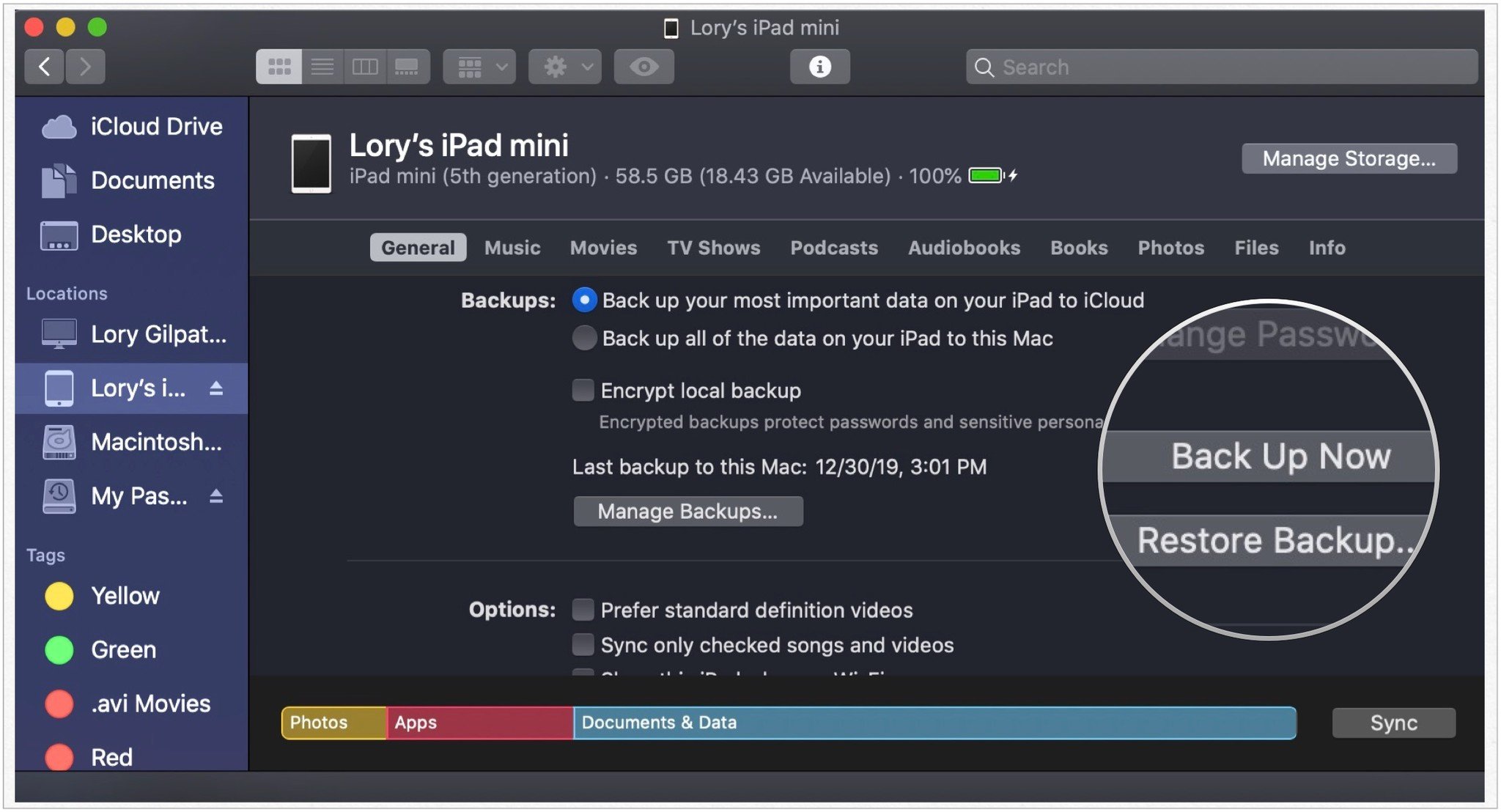 Source: iMore
Source: iMore - Open up the ios_backup folder on your external difficult drive.
-
Check to come across that the date and time on the latest backup is for the one you lot only completed.
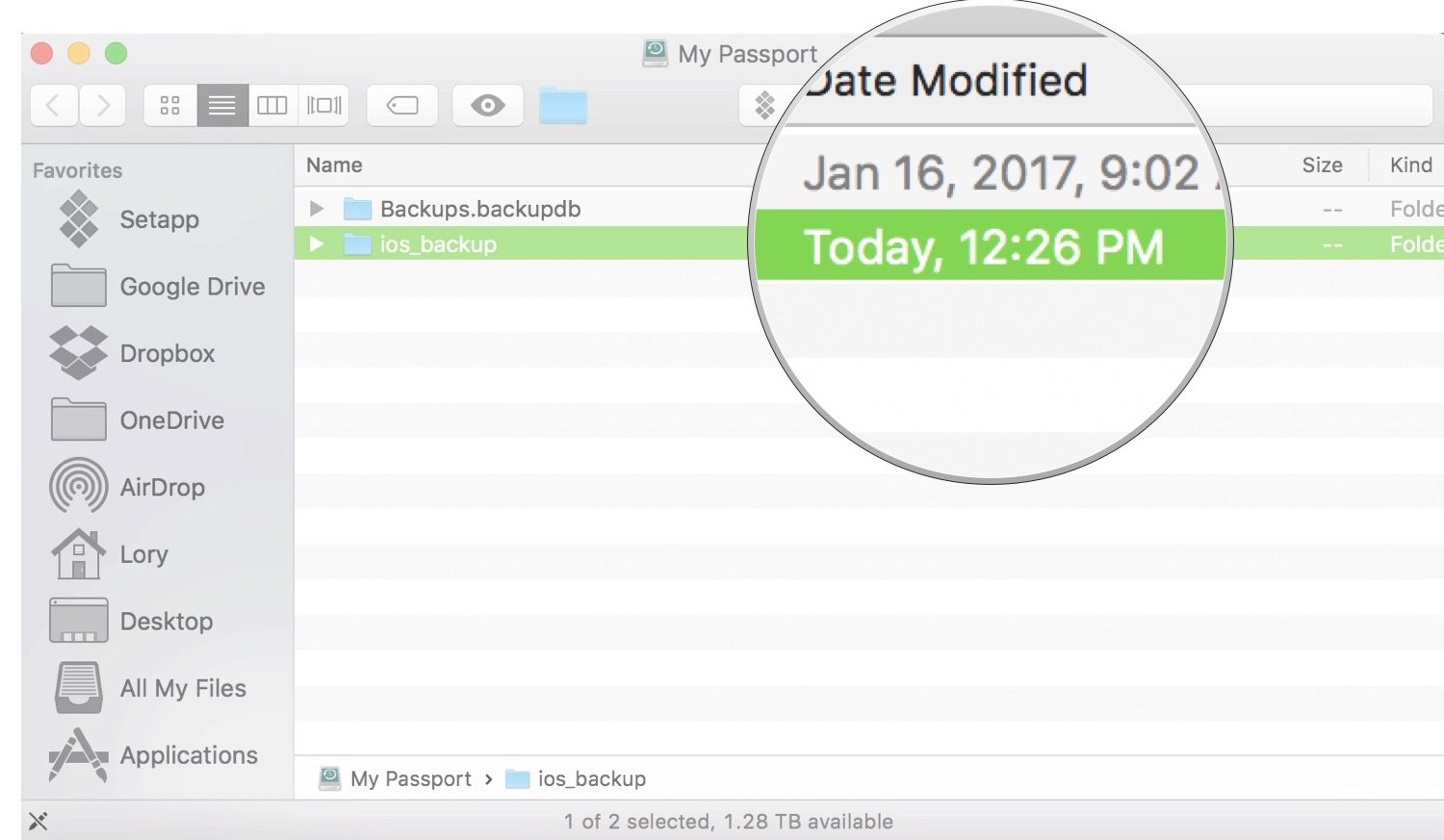 Source: iMore
Source: iMore
If the pathway relocation worked, and you can ostend that backups are now happening on your external difficult drive, you lot tin delete the old_backup folder on your Mac.
Note: If you go back to the MobileSync binder and open the symlink folder, you will see the names of the files that chronicle to your backup. These are aliases, not bodily files. It'due south similar a thumbnail of a movie.
Step iv: Disable automated backups when connected to your estimator
If you don't always accept an external difficult drive connected to your Mac, you're going to need to disable automatic backups of your iPhone or iPad. Otherwise, whenever you connect your iOS device to your Mac, you'll get an error message.
- Click Finder on your Mac's Dock.
- Click on your device on the left side of the Finder window.
-
Tick the box at the lesser adjacent to Automatically sync when this iPhone is continued.
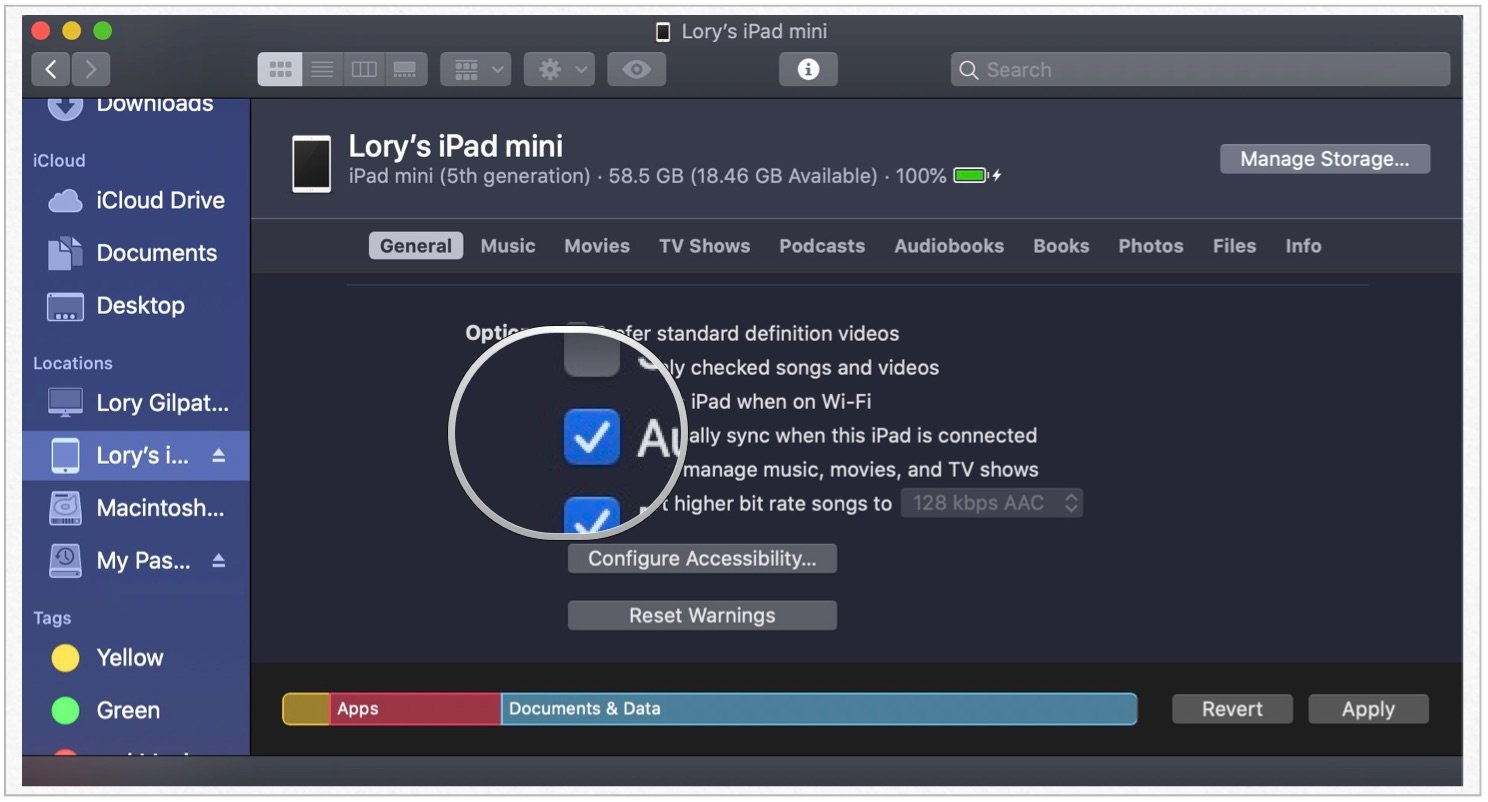 Source: iMore
Source: iMore
Don't forget to manually back up your iPhone whenever y'all connect it to your computer and take your external hard bulldoze plugged in also.
How to restore the backup to your iPhone
To restore an iPhone or iPad fill-in from an external drive requires moving the files back to the Mac.
- Connect your external hard bulldoze to your Mac if it isn't already connected.
- Open the external hard bulldoze.
- Become back to the Finder window and go to the device backup folder on your Mac, where the symlink file you created above is located. Our example higher up is located at ~/Library/Awarding\ Support/MobileSync/Fill-in/.
-
Elevate the backup file on your external hard drive to the device fill-in folder.
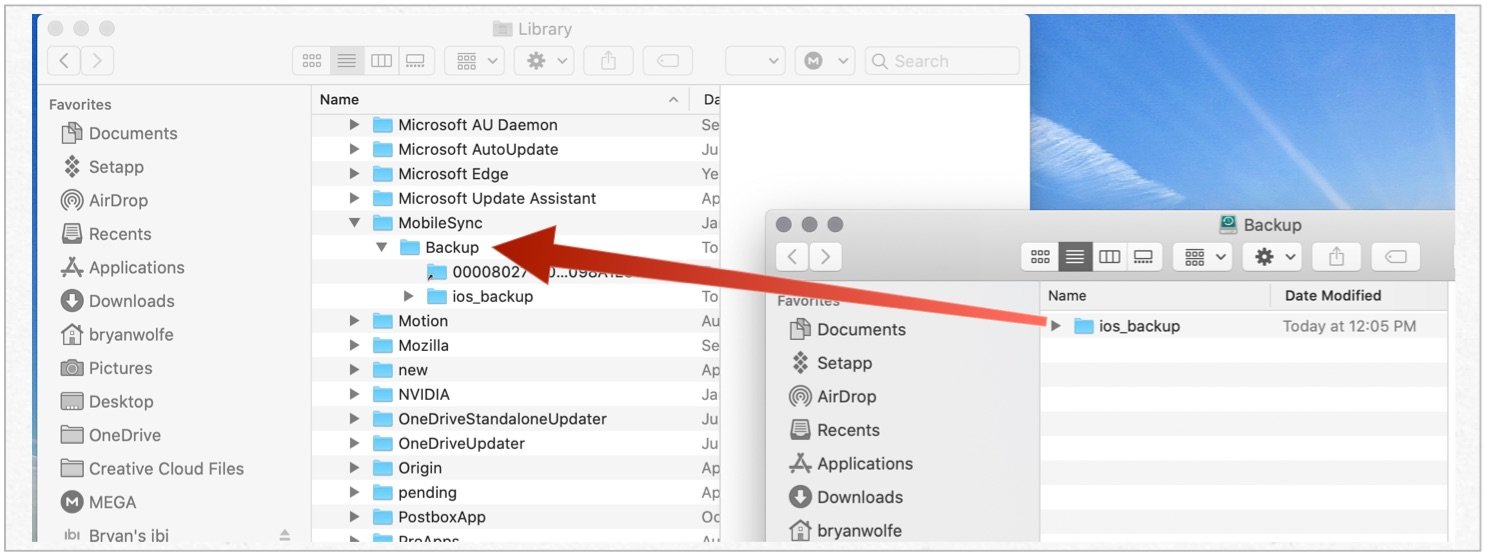 Source: iMore
Source: iMore - Enter your administrator countersign to authenticate your activity, if necessary.
Depending on the size of your fill-in, this could accept a long time. Make sure y'all have enough space on your Mac.
Next, yous'll need to begin the restore process in Finder:
- Click Finder on your Mac'southward Dock.
- Click on your device on the left side of the Finder window.
-
Click on Manage Backups on the General tab to confirm the backup you lot wish to use is nowadays.
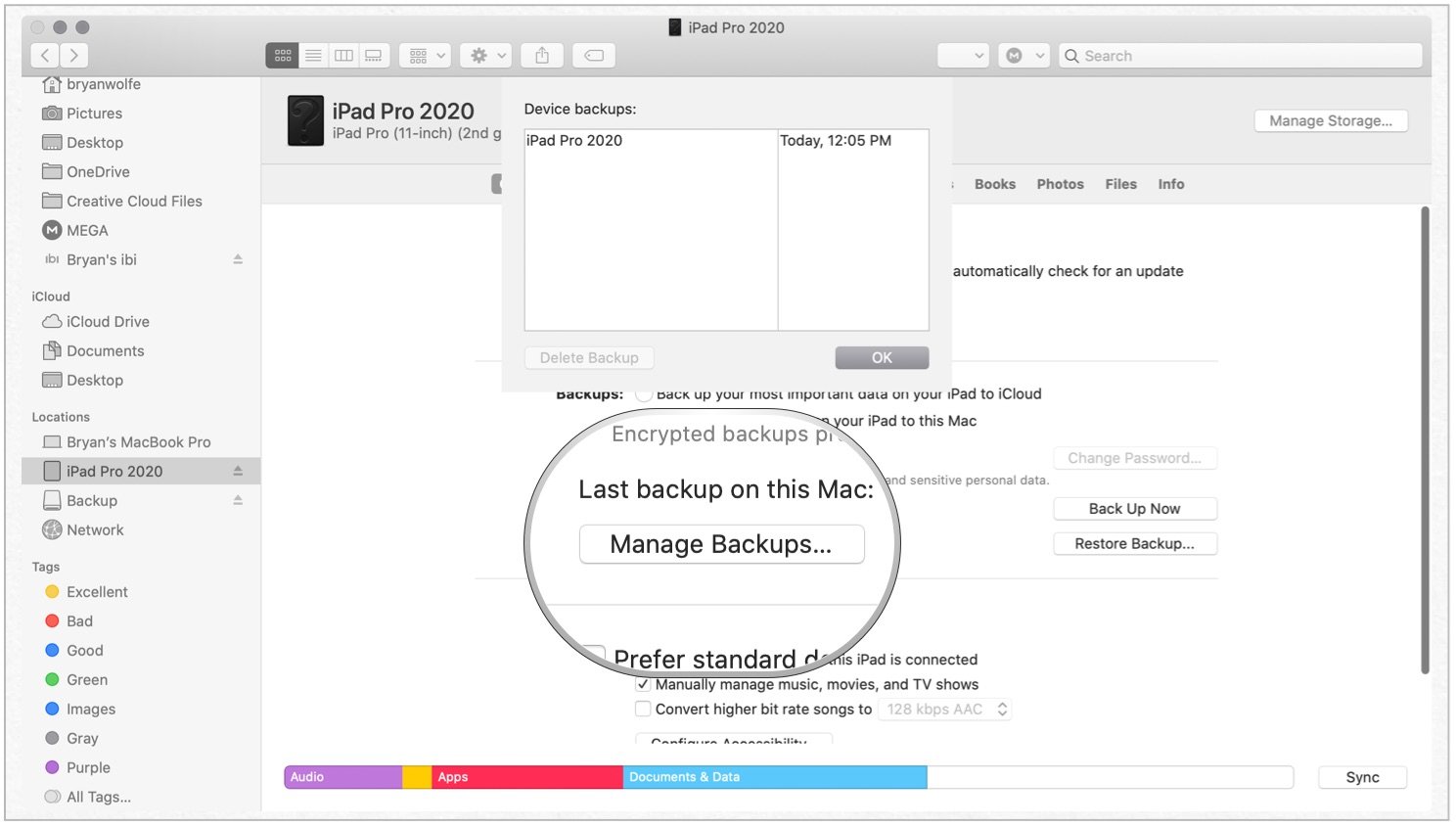 Source: iMore
Source: iMore - Click OK to close the box.
- Select Restore Backup.
- Toggle the backup you wish to use in the pop-up box.
-
Click Restore.
 Source: iMore
Source: iMore
Your mobile device is now being restored. In one case it's done, you may wish to delete the fill-in folder you dragged to the Mac to save infinite. Otherwise, you'll now have ii backups, the one you saved on the Mac and the other on the external bulldoze that continues being used for backup purposes.
How to remove the symlink and get dorsum to storing your backups on your Mac
If you fabricated a mistake and the symlink didn't work, or y'all want to go dorsum to storing your backups on your Mac, all y'all have to do is delete the symlink folder you created. No demand to enter whatever "rm" or "unlink" control in Concluding.
- Type ~/Library/Application Support/MobileSync/Backup into Spotlight.
- Select the symlink binder. Retrieve, it's the one with an pointer in the bottom left. It will either exist chosen "Backup" or have a series of numbers and letters representing your device.
- Delete the symlink binder.
- Back up your device via the computer.
-
Delete the ios_backup binder on your external difficult drive (optional).
 Source: iMore
Source: iMore
Any questions?
Do you take whatsoever questions about moving your iOS backups to an external hard drive? Put them in the comments, and I'll assistance you out.
Updated August 2021: Updated for latest macOS.
Source: https://www.imore.com/how-move-your-iphone-or-ipad-backups-external-hard-drive
Posted by: knappspass1986.blogspot.com
















0 Response to "How To Change Backup Location Itunes Mac"
Post a Comment